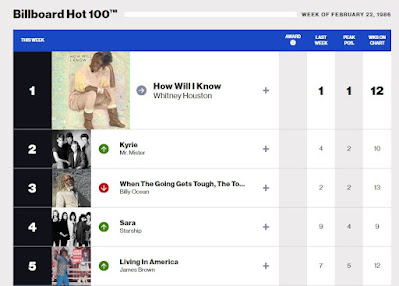High Times
February 1986
February, 1986. The single at the top of the Billboard Hot 100 is 'How Will I Know' by Whitney Houston.
Let's sit down with the latest issue of High Times magazine !
This issue has some genuine highbrow content: an interview with French film director Jean-Luc Godard, and a feature on the UK author and philosopher Colin Wilson.

There's a music article on up-and-coming folkie, and geek girl icon, Suzanne Vega. Her song 'Luka' would be a breakout hit in 1987.
Indicating the editorial board's greater emphasis on promoting not just marijuana-related issues, but all left-of-center political causes, there's a lengthy article on anti-abortion politics.
The magazine does stay true to its roots with the traditional columns and features from botanical guru Ed Rosenthal. Kids, can you believe that back in 1986, it was a big deal to send in photos to High Times of you and your plants, all in a clandestine fashion ? Quite a change from how it is nowadays, where you can stroll into your fave dispensary and select from an impressive array of legitimate 'product' !
I never bought any of those mushroom growing 'kits', as my understanding was that even if you were able to grow the Psilocybe spp. mushrooms in the first place, the yield was so tiny that you weren't going to catch a buzz.
Harkening back to the days of yore, we get a reminiscence of how it was in the early 1980s to make dope-buying trips down into Mexico. But in the mid-80s, things were becoming very dangerous..........And on the pop culture front, well, the High Times editorial staff aren't all that happy with those Death Wish films and their glorification of vigilante violence.That's how it was, folks, 38 years ago, in the pages of High Times. Truth be told, I read this issue with some disappointment. The goofy, hippie / Cheech and Chong / counterculture vibe that made the magazine resonate so well with the stoner culture during the 1970s and early 1980s, was by the mid-80s replaced by editorial concepts and directions that considerably were more 'corporate' in attitude. Admittedly, this editorial strategy was increasing circulation, but at the same time, it felt like something of the original soul of the publication was leaching away............














































































